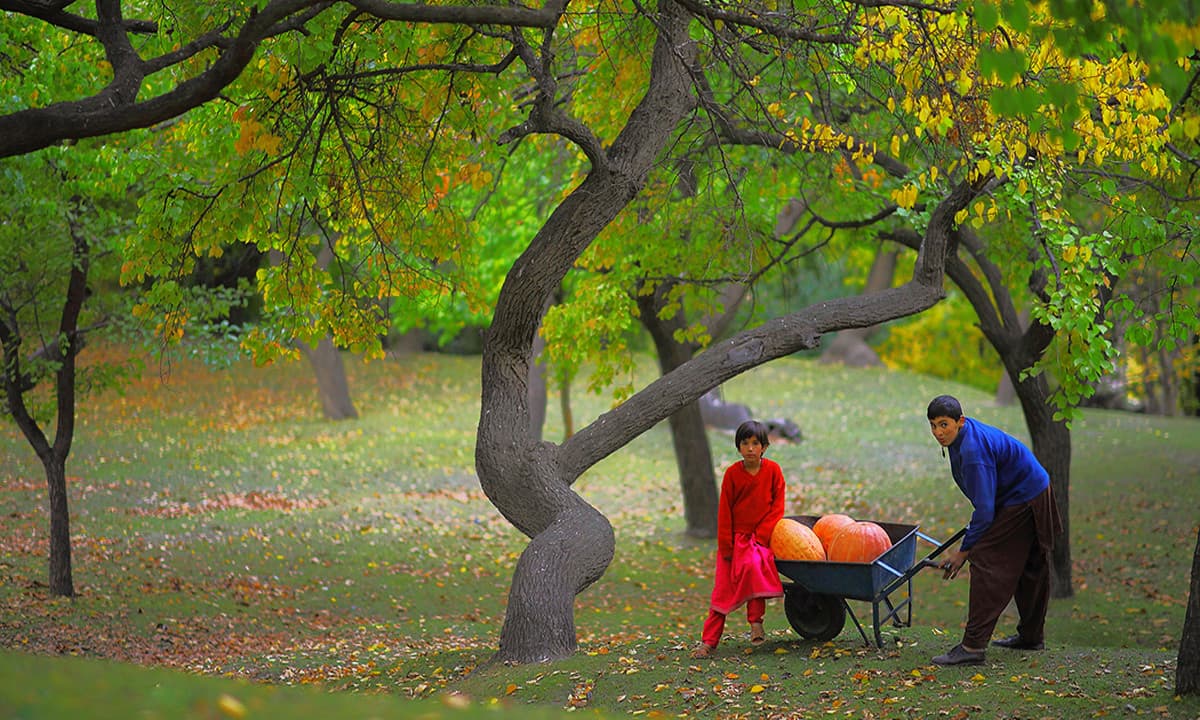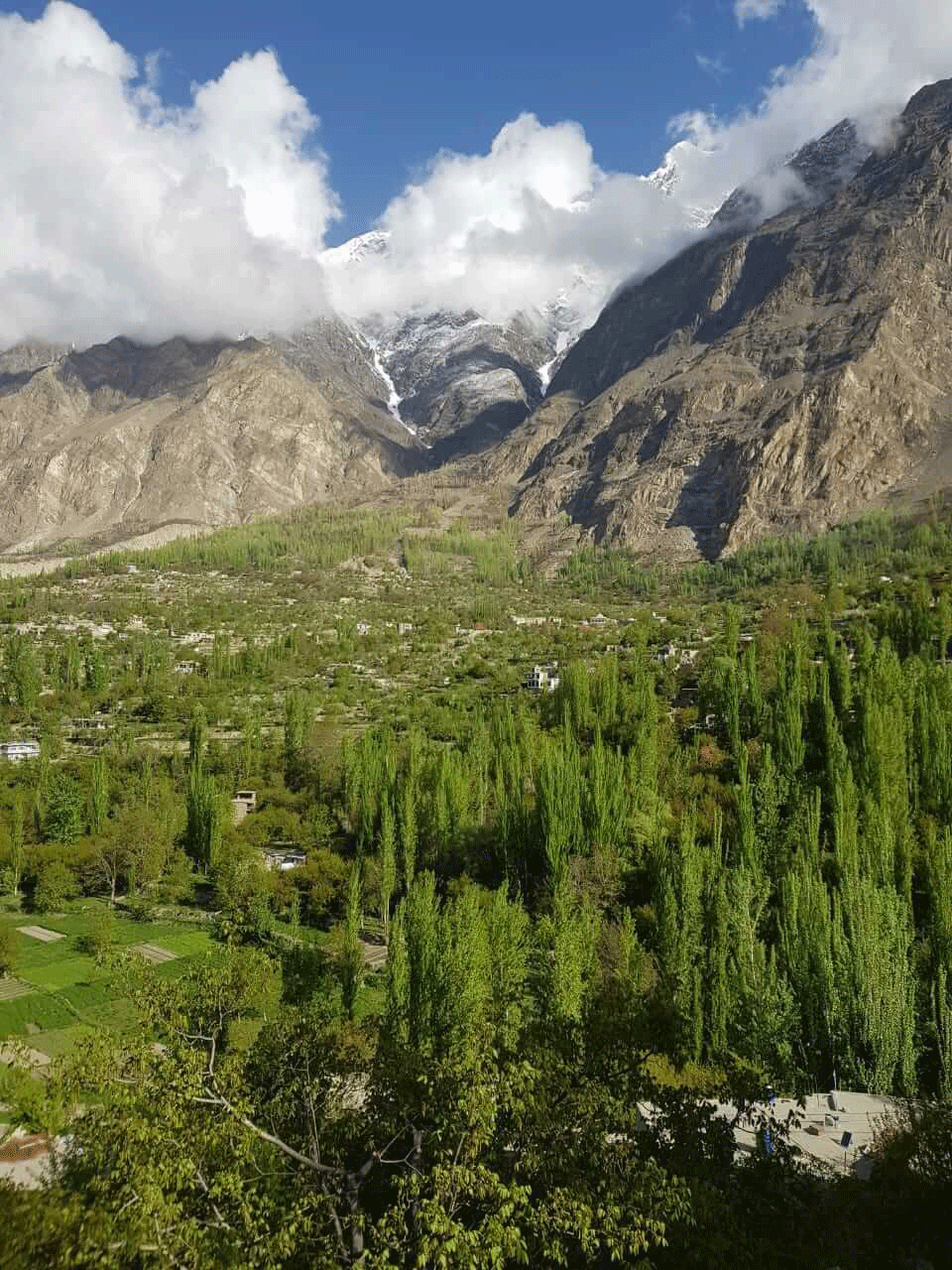
Hunza Valley: A Blend of Natural Splendor and Cultural Riches
Nestled in the northernmost regions of Pakistan, Hunza Valley stands as a testament to nature’s grandeur and cultural richness. Located in the Gilgit-Baltistan region, this picturesque valley has captured the hearts of travelers for centuries with its awe-inspiring landscapes .Towering mountains, and vibrant local culture. In recent years, advancements in artificial intelligence (AI) have begun to enhance our understanding and appreciation of places like Hunza, offering new perspectives on its beauty and significance. Exploring the Enchanting Hunza Valley
Natural Beauty:
Hunza Valley is renowned for its stunning natural beauty, characterized by snow-capped peaks, lush green valleys, and crystal-clear rivers. At the heart of the valley lies the Karakoram Range . Home to some of the world’s highest peaks, including Rakaposhi, Ultar Sar, and Ladyfinger Peak. These majestic mountains not only provide a breathtaking backdrop but also offer opportunities for trekking, mountaineering, and photography.
AI technology has played a role in mapping and documenting the topography of Hunza Valley with unprecedented detail. Satellite imagery and drone photography powered by AI algorithms enable us to explore and appreciate the valley’s intricate terrain . Revealing hidden valleys, glaciers, and geological formations that might have been overlooked in the past. These technological advancements not only aid in conservation efforts but also allow travelers to plan their expeditions with greater precision . Ensuring minimal impact on the fragile ecosystem.
Cultural Riches:
Beyond its natural splendor, Hunza Valley boasts a rich cultural heritage shaped by centuries of history. The local population, predominantly Burusho people, have preserved their traditions, language . And unique way of life amidst the rugged mountain landscape. Traditional festivals, such as the springtime celebration of “Jashn-e-Baharan,” showcase the vibrancy of Hunza’s cultural tapestry, attracting visitors from around the world.
AI is also contributing to the preservation and promotion of cultural heritage in Hunza Valley. Digital archives and virtual museums powered by AI algorithms are preserving historical artifacts . Oral histories, and traditional knowledge for future generations. Machine learning models can analyze and interpret cultural patterns . Helping researchers understand the evolution of language, art, and customs in this remote region. Moreover, AI-driven translation tools facilitate communication between tourists and locals, fostering cultural exchange and mutual understanding.
Tourist Attractions:
Hunza Valley offers a plethora of attractions that cater to every traveler’s interests. The ancient Baltit and Altit Forts, perched atop hilltops overlooking the valley, provide a glimpse into Hunza’s storied past and architectural splendor. The terraced fields of cherry and apricot orchards paint the landscape in vibrant . Hues during the spring blossom season, creating a scene straight out of a fairytale.
AI-powered travel platforms and apps are revolutionizing the way tourists explore and experience Hunza Valley. Recommender systems analyze user preferences and historical data to suggest personalized itineraries . Highlighting must-see attractions, local eateries, and off-the-beaten-path destinations. Augmented reality (AR) applications overlay digital information onto real-world scenes, offering interactive guides and immersive experiences at cultural sites and natural landmarks. These technological innovations enhance the overall tourist experience while promoting sustainable tourism practices in Hunza Valley.
Culinary Delights:
No visit to Hunza Valley is complete without savoring its delectable cuisine, which reflects a blend of Central Asian, Middle Eastern, and South Asian influences. Traditional dishes such as “Chapshuro,” a savory flatbread filled with minced meat and spices, and “Apricot Halwa,” a sweet dessert made from locally grown apricots, offer a tantalizing taste of the region’s culinary heritage.
AI-driven platforms are also contributing to the promotion of local cuisine in Hunza Valley. Food recommendation systems analyze user preferences and dietary restrictions to suggest authentic dining experiences at local restaurants and eateries. Moreover, AI-powered recipe generators enable travelers to recreate traditional dishes at home, fostering cultural appreciation and culinary exchange beyond geographical boundaries.
Environmental Conservation:
Preserving the natural beauty and ecological balance of Hunza Valley is paramount to sustainable tourism development. AI technologies are playing a crucial role in environmental conservation efforts by monitoring and managing natural resources effectively. Remote sensing data processed by AI algorithms can track changes in vegetation cover, water quality, and wildlife habitats, providing valuable insights for conservationists and policymakers.
Furthermore, AI-powered predictive models help anticipate and mitigate the impact of climate change on fragile ecosystems in Hunza Valley. By analyzing historical climate data and simulating future scenarios, researchers can develop strategies for sustainable resource management and adaptation to environmental challenges.
Conclusion:
Hunza Valley stands as a testament to the harmony between natural beauty, cultural heritage, and technological innovation. As advancements in AI continue to enhance our understanding and appreciation of this enchanting region, the timeless allure of Hunza Valley persists, captivating travelers and scholars alike. Whether exploring its towering peaks, immersing oneself in its rich cultural tapestry, or savoring its culinary delights, Hunza Valley offers a transformative experience that celebrates the intersection of tradition and innovation in the heart of the Karakoram.
In the age of AI, Hunza Valley serves as a reminder of the profound connection between humanity and the natural world, inspiring us to cherish and protect our planet’s diverse landscapes for generations to come.
